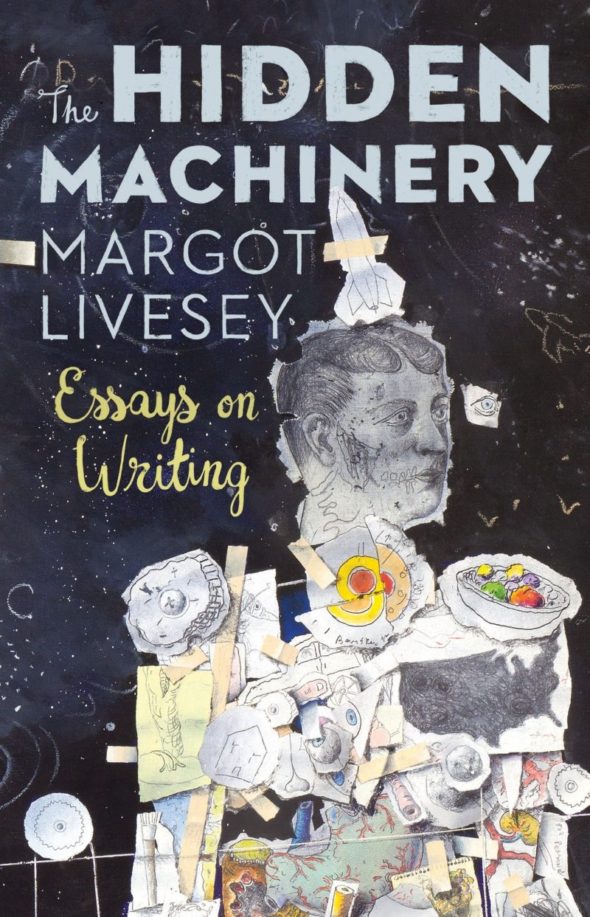
Margot Livesey’s essay collection The Hidden Machinery is a journey through one novelist’s efforts to be influenced by great fiction. It’s also the best craft book of 2017 not written by John McPhee. As a young writer, after producing a novel manuscript that was “simultaneously farfetched and boring,” Livesey realized that she “had entirely failed to be influenced by [her] years of ardent reading.” An agent shopped around a revised version of the farfetched and boring novel but it was universally rejected.
She then turned to writing stories because she “did not want to keep making mistakes over several hundred pages. Besides… stories fit better with the split shifts [she] was working as a waitress in Toronto.” The ten essays in this new book make it clear that she has since developed both the ability to be influenced by and to explicate fiction. Her explorations of novels by Jane Austen, Gustave Flaubert, E.M. Forster, Henry James, Virginia Woolf, and others are often thrilling. It’s a pleasure to dive with her into the watch-like moving parts of literary fiction.
In the title essay, ruminations on her early failures build to a comparison of the novels of Henry James and E.M. Forster. Livesey claims that, “James is Forster’s most immediate ancestor with respect to his gift for psychological insight and his deliberate use of travel.” She goes on to rip the cladding from Forster’s A Passage to India, exposing its working components and contrasting them with those of James’ novels. All of this is seamlessly brought to bear on her own work. It’s a dazzling demonstration of literary criticism combined with personal writing, and it will interest readers accustomed to filling their books with marginalia.
In the essay “Nothing but Himself: Embracing Jane Austen’s Second Chances,” Livesey walks readers through the particular difficulties of rendering heterosexual romance: “From the reader’s point of view, it is a truth universally acknowledged that if a single man and a single woman are in the same story, they are going to end up together.” Livesey recognizes how Austen controls readers’ expectations, and she looks toward Austen for insight in writing her own romance novel.
She observes, “I knew that, almost irrespective of the difficulties with which I burdened my characters, readers would be expecting this unlikely couple to end up together. The question was how to manage those expectations…without causing either boredom or frustration.” Incredibly, Livesey writes about writing to avoid boredom and frustration in a way that risks neither. She boldly proposes six “rules governing romance” that are too good to spoil here. Suffice it to say that the essay has caused me to reimagine (if not actually rewrite) my always-in-progress first novel as a romance. It has also inspired me to revisit Austen’s work with my mind awake and my pencils sharpened.
Livesey approaches the subject of writing fiction with a mix of pragmatic explanation and personal story. We visit and revisit the Scottish all-boys boarding school where her father taught when she was a teenager, we’re with her when she learns of her stepmother’s death, and we follow her up a small mountain in Iceland:
“The track leading to it follows the shore of a small lake fringed with rushes. Dozens of swans, all facing in the same direction, drift on the dark waters. At the far end, I park beside a fence. A narrow path zigzags up the hill through the long grass….I climb slowly, taking in the ever-expanding view, occasionally startling, and being startled by, a sheep. Then, quite suddenly, I am at the top, standing on a broad plateau littered with broken rocks as if a giant with a hammer had vented his rage.”
This paragraph is remarkable in that it’s from the opening of an essay on the role of research in fiction. In other hands, such an essay could easily become erudite, academic, and dull, but Livesey doesn’t allow for boredom, slipping in captivating descriptions and personal details to drive home critical points. In the essay “Shakespeare for Writers,” a title that prepares me for a waking nap, she offers the only wholly intelligible and convincing argument that I’ve encountered for why today’s fledgling writers should study the Bard.
After revisiting and analyzing four Shakespeare plays (A Midsummer Night’s Dream; Henry IV, Part II; The Merchant of Venice; and King Lear), she distills them into a list of “sixteen golden sovereigns,” or writerly takeaways (directly quoted):
- Begin dramatically.
- Don’t keep back the good stuff.
- Consider beginning in the present.
- Negotiate your own standards of plausibility.
I’m breaking the second rule by withholding the twelve steps that follow. With personal stories, micro scenes, and lists, Livesey makes her literary analysis accessible, practical, and interesting.
The field of books by writers on writing is crowded, but Margot Livesey’s The Hidden Machinery deserves a place on the shelves of aspiring novelists. Rarely is such a complex understanding of the elements of fiction (see E.M. Forster) presented in such palatable terms (see Stephen King). The feat is not to be missed, and this book deserves a wider audience than what it will find in graduate writing workshops. If you’ve ever tried and failed to write a novel, then you should read this book.

